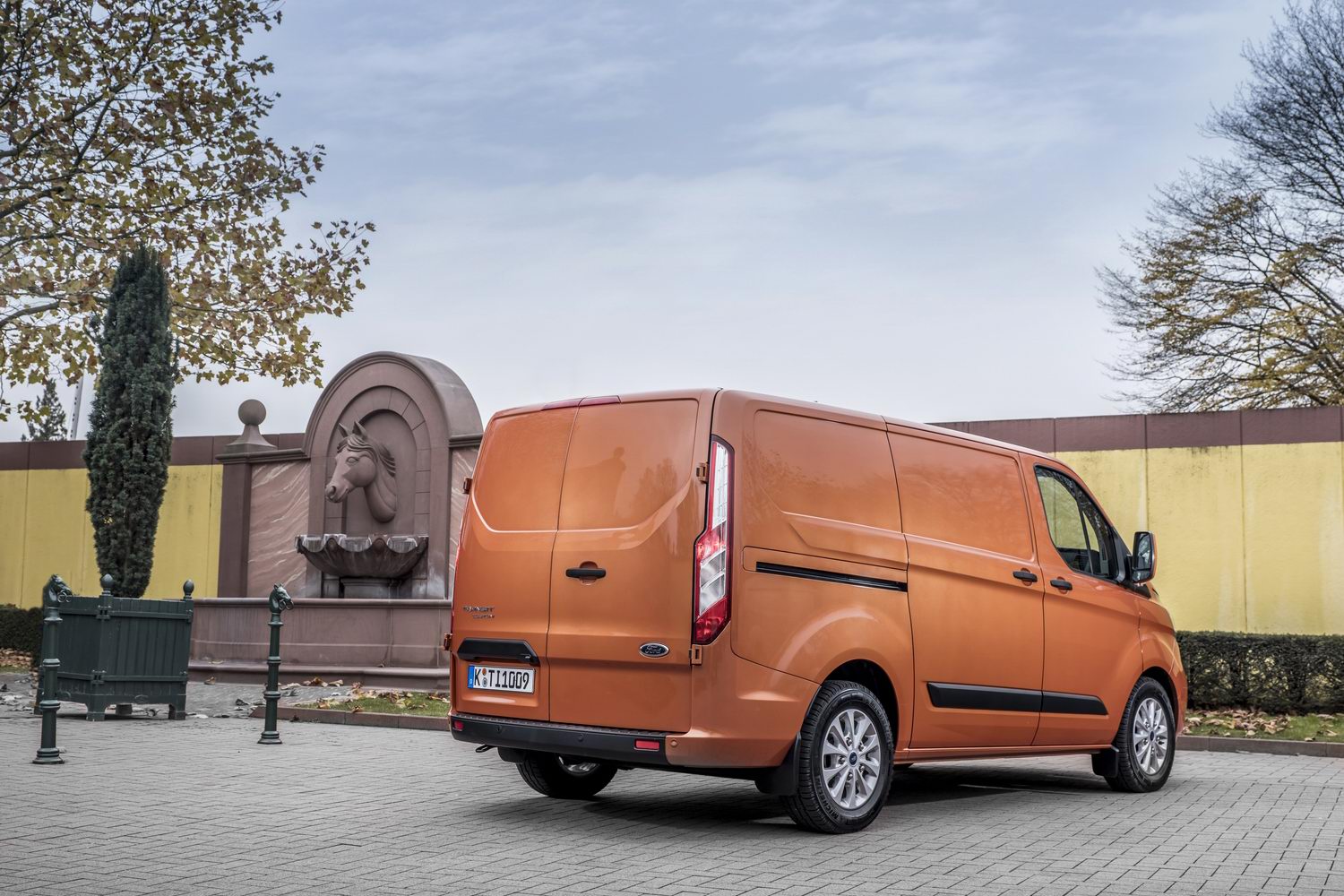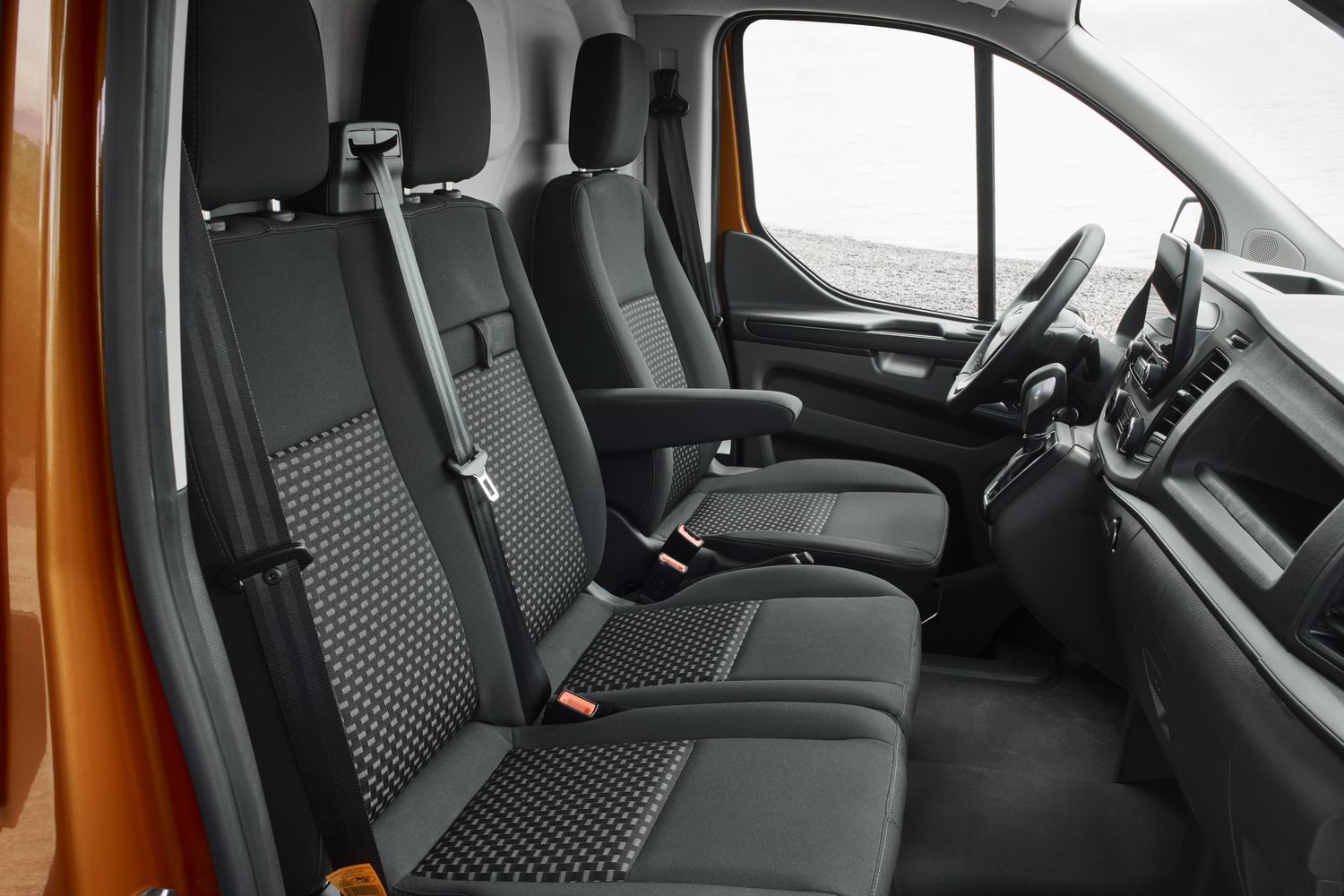Ford Transit Custom overview
It might be difficult to believe, but the Ford Transit Custom ranks alongside passenger cars such as the Fiesta, Focus and Puma as a top seller in Ford’s European line-up. And in these times of increased home deliveries, it’s a great choice for business users. The Transit is ubiquitous in the van sector, and Ford has used the name to create a range of models. At the top of the tree is the Transit, which stands alone as the large van, while the Transit Custom is the name of this, the medium-sized variant. The smaller Transit Connect and Courier models complete the line-up, but here we’re concentrating on what is possibly the best model in the range.
The Transit Custom is compact enough to be easy to drive, and yet offers great load-carrying ability. In Ireland, it comes in L1 and L2 panel van body styles and as a crew van called the Double Cab in-Van (DCiV) - some other markets get a high-roof variant, too, but low sales numbers mean it’s not offered here. That’s the basic van range, but there are also passenger carrying Kombi versions and the plusher eight-seat Tourneo Custom.
The panel vans come with barn doors at the rear that can lock open at 90 or 180 degrees, while a single passenger-side sliding door is fitted as standard – you can add a second sliding door as an option. Up front, there’s three-abreast seating and a steel bulkhead between the cargo area and passenger compartment.
Go for the DCiV crew cab, and there’s still a partition between passengers and the load bay, but this means that the latter is now only accessible via the rear doors. Two sliding doors with glazing are standard, and the cab has five seats, with two up front and a three-seat bench. In fact, we’d say that the DCiV does a pretty good job as an MPV, and would recommend it to anyone looking for a large family vehicle that doesn’t think an SUV can really cut it.
Constant updates to the Transit Custom have seen it improve over the years, and one of the more significant changes came in 2019, when Ford introduced its latest EcoBlue 2.0-litre diesel engine. This comes in no less than four power outputs, ranging from 105-185hp, while the mid-range 130hp and 170hp engines can also be had with fuel-saving mild-hybrid technology that Ford badges ‘mHEV’. Ford also offers a plug-in hybrid variant that combines a 1.0 EcoBoost petrol engine, electric motor and battery pack to offer an all-electric range of around 50 kilometres.

Gearbox choices comprise a six-speed manual or six-speed Powershift automatic, both of which send power to the front wheels. While there’s no four-wheel-drive option, Ford does fit a switchable traction control system to boost grip in slippery conditions, while a mechanical limited-slip differential is available, too.
Ford Transit Custom range
For the most basic Transit Custom experience, you have the Leader trim. This is the van that comes with steel wheels and plastic bumpers, but it still gets a three-seat cab and a through-loading steel bulkhead, while kit includes electric windows, twin USB sockets (one on the dashboard, one in the dashtop tray ahead of the driver), central locking, a trip computer, two 12V sockets in the cab, reach and rake adjustable steering, Bluetooth and Ford’s Pass Connect telematics. Safety equipment includes stability control with roll stability and side wind mitigation. Leader models can be powered by the 105hp and 130hp diesels, but come in all body styles.
Trend models add body-coloured bumpers, plastic wheel trims and distinctive ‘ringed’ LED daytime running lights, while kit ramps up with front and rear parking sensors, a lockable glovebox, auto lights and wipers, cruise control, a Quickclear windscreen and Ford’s Sync3 eight-inch touchscreen infotainment system with Apple CarPlay and Android Auto smartphone connectivity. The 105hp, 130hp and 170hp diesels are all available here, in all body styles.

If you want something more rugged, then the Transit Custom Trail takes the Trend trim and gives the van a makeover with plastic cladding similar in style to the Ranger Raptor . The grille has ‘FORD’ lettering emblazoned across it, there are matt black body additions and the black alloys can be had with all-season tyres. Under the skin, the mechanical limited-slip differential is fitted as standard, while leather trim is added to the cab. The Trail only comes as a panel van with 130hp or 170hp engines.
Limited models are offered as a panel van with the 130hp or 170hp diesels, too, and are the Transit Custom equivalent of Titanium trim found on passenger cars. There are alloy wheels and extra chrome trim on the grille and in the cab, while air conditioning and heated seats are added. Active trim is a variation on Limited, and follows a similar theme to Fiesta and Focus Active, by adding bi-tone alloy wheels and featuring silver roof rails and contrast painted lower body details to give the look of an SUV. This version comes with the 130hp diesel in the L1 body, or the 170hp diesel in L2 guise.
At the top of the range is the Transit Custom Sport. This is the only model to get the 185hp EcoBlue diesel, and it features part leather seats, a rear camera and lane assist, as well as twin body stripes and a chunkier body kit when compared with the rest of the range.
Ford Transit Custom interior
The cab of the Transit Custom is spacious for three - all models get a twin passenger seat – while the tall driving position and big mirrors with wide-angle lower glass mean there’s a clear view out. Shoulder space is good, while the driver gets an armrest and a cut-out on the door trim that doubles as an elbow rest. Higher-spec models with the Sync3 set-up have a large touchscreen that’s set high on the dashboard within easy reach, while the multifunction steering wheel incorporates voice control, too.

There are lots of cubbies and storage in the cab. The twin passenger seat flips up to reveal a big bin underneath - although this also is where items will rest if the through-loading function is being used - plus there’s a big glovebox, double bins in the doors, a number of cup holders and dashtop trays.
In the back, having a single sliding side door isn’t too much of an issue. It opens wide, as do the twin doors at the back. The cargo area is one of the better in the class, with at least six cubic metres of space on offer, although there is a bit of wheelarch intrusion to deal with. The through-loading bulkhead is only of use for carrying pipes or planks, but is still useful to have, while lashing eyes are dotted around the floor. You can add a plastic floor covering, and plyboard panels offer load bay protection. One option that Ford offers is a set of roof bars that sit flush on the roof of the van, but can be flipped up to carry items when they’re needed.

The Double Cab in Van is a spacious five-seater that can easily double up as an MPV. Access to the back seats is a bit tricky because of the high step into the passenger compartment, while the back seat is set quite high, too. But at least the cargo area has the same utilitarian appeal as the panel van’s, so you can chuck everything in there without having to worry about scratching plastic or damaging carpets.
Ford Transit Custom driving experience
The least powerful 105hp EcoBlue diesel lacks grunt if you’re planning on carrying heavy loads, so we’d recommend the 130hp diesel at least. The slick six-speed manual gearbox is great to use, with a crisp shift, while the auto is also smooth. It has a button on the side of the shifter that allows you to select gears, but most of the time the gearbox is fine to leave to its own devices.
There’s some of Ford’s sharp-handling know-how in the Transit Custom. The steering is responsive, but the van’s tall body means there’s plenty of lean in corners that stops you pushing it any further. As with most vans, the Ford is a little bouncy when unladen, but settles well if there’s some weight in the back.

The Sport model at the top of the range packs a 185hp punch that is unheard of in a van. It delivers healthy acceleration, while its bigger wheel and tyre combo means there’s more grip than any van could ever need.
Ford Transit Custom alternatives
The Transit Custom is right at the front of the medium-sized van pack, and offers a good mix of practicality and tech. For a more premium experience, there’s the Volkswagen T6.1 Transporter, or you could try the Mercedes Vito. The former comes in a similar variety of body styles, while the latter is offered with front- or rear-wheel drive.
Elsewhere, the Renault Trafic is a no-nonsense van with plenty of space but not quite as much tech as the Transit Custom. It shares its body with the Nissan NV300 and Fiat Talento, which have the same appeal.
Finally, the Opel Vivaro, Citroen Dispatch, Peugeot Expert and Toyota Proace are three vans that use the same body and running gear, but aren’t quite as spacious as the Transit Custom. However, they are more car-like to drive and come with the same safety tech and upmarket options that you’ll find in their respective passenger car ranges.
Ford Transit Custom summary
With good carrying capacity and a wide variety of trim levels to choose from, the Ford Transit Custom should be on the shortlist of any van buyer. There’s plenty of space inside for cargo and passengers, and the van is good to drive, while the DCiV is an intriguing alternative to an MPV or pick-up truck for business users that need a vehicle that can double as family transport.






